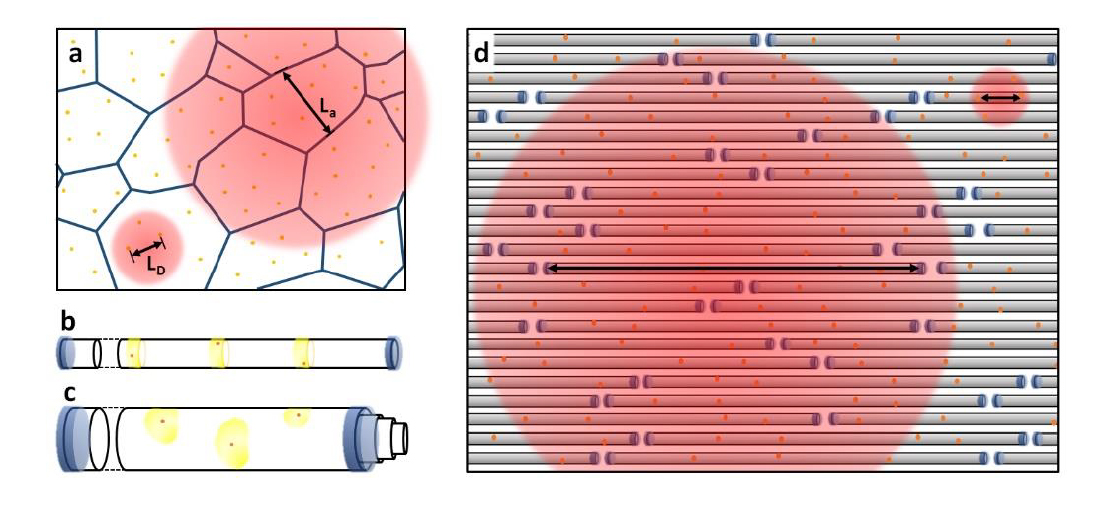Raman spectroscopy gives researchers in carbon nanotechnology rapid, non-destructive information on graphitic molecular structure, which is important for controlling the strength and conductivity of these materials. In particular, the ratio of the D peak intensity to the G peak intensity is a well known metric of crystal quality that corresponds to the crystal grain size in graphite and graphene. The D:G ratio has been empirically extended to carbon nanotubes (CNTs) as a qualitative indicator of general crystallinity, but it differs drastically from the response of graphene, at least on an individual molecular basis. This is a result of a CNT’s one dimensional nature, chirality (molecular twist in the CNT’s lattice), and accompanying electronic transitions that graphene and graphite do not share.
In this paper, we show how the D:G ratio yields the characteristic length of crystalline features that are remarkably independent of single-wall CNT (SWCNT) chirality when purified SWCNTs are in a high density, heavily bundled textile form. Purified, unaligned, SWCNT films of enriched length distributions and controlled chirality responded in ways consistent with power-law behaviour, where the D:G ratio is proportional to the fourth power of excitation wavelength, inversely proportional to SWCNT length, and fits to a master curve independent of electronic species concentration. This behaviour, matching the established response of graphite and graphene, unexpectedly persists despite complications from chirality-dependent resonances unique to SWCNTs. We also show that Cambridge-made textiles comprising of aligned, long length CNTs defy these simple power laws until defective multiwall CNTs and impurities are removed post-process, and only if sample heating under the Raman laser is minimized. Adjusting the Raman laser beam diameter up to 6 mm, which is well beyond the average CNT length, we propose that the characteristic crystal length in CNT textiles is the CNT length, which has previously been very difficult to measure directly.
Figure: Illustration of how Raman laser spot (red shaded region) interacts with (a) polycrystalline 2D graphene, (b) single-wall carbon nanotubes, (c) multi-wall carbon nanotubes and (d) a bundle of multi-wall carbon nanotubes. When laser spot is small in size, it measures the local crystallinity of graphene lattice, whereas when it is large, it measures (a) the size of crystalline regions in 2D graphene or (d) the length of carbon nanotubes in a bundle.
J. S. Bulmer, T. S. Gspann, J. S. Barnard and J. A. Elliott, “Chirality-independent characteristic crystal length in carbon nanotube textiles measured by Raman spectroscopy”, Carbon 115 (2017), 672-680.

